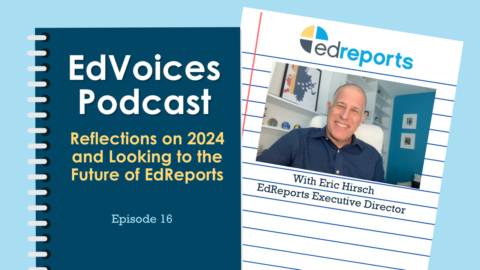What the Pandemic Taught Us about Families, Curriculum, and Student Learning
Leaders from the Center for Public Research and Leadership (CPRL) share lessons learned about the power of high-quality instructional materials from a year of disrupted schooling.
Related Resources
video
Reflections on 2024 and Looking to the Future of EdReports
Reflecting on EdReports' 2024 highlights and 2025 plans, including newly-updated tools for K–12 curriculum and our first-ever reviews of pre-K materials.
article
4 Steps to Ensure High-Quality Curriculum Leads to Impact
To leverage quality curriculum for improved student outcomes, prioritize teacher-led adoption and ongoing, curriculum-based professional learning.
faq
EdReports Version 2.0 Tool Revisions: Frequently Asked Questions
Beginning in early 2025, reports developed by EdReports for comprehensive, K–12 instructional materials will use updated versions of our review tools.


